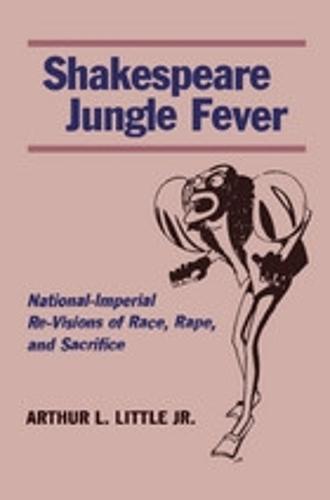Overview
This book takes Shakespeare s plays as a site for studying the specter of interracial sex of a jungle fever in early modern England s envisionings of itself. Shakespeare s works here assume the status of interrogating, of re-envisioning, rather than simply restaging the scene of a horrific sexual encounter. The author argues that early modern England s national-imperial aesthetic, notably its evocation of classicism, relies significantly on a textual and cultural manipulation of race. Nowhere is this more apparent and popularly accessible than in the period s drama and in sacrificial rape stories, narratives in which a raped white woman kills herself not only to reclaim her lost virginity but also to claim or reclaim her racial whiteness. Not surprisingly, the desire to affirm the sacrificially raped woman as white necessitates the inclusion of black male bodies in these stories. This inclusion is made all the more conspicuous by the fact that there are no known historical accounts of a black man raping a white woman in early modern England. Why, then, the obsession with jungle fever?
Full Product Details
Author: Arthur L. Little
Publisher: Stanford University Press
Imprint: Stanford University Press
Edition: New edition
Dimensions:
Width: 15.20cm
, Height: 1.70cm
, Length: 22.90cm
Weight: 0.454kg
ISBN: 9780804746335
ISBN 10: 0804746338
Pages: 277
Publication Date: 25 December 2000
Audience:
College/higher education
,
Professional and scholarly
,
Undergraduate
,
Postgraduate, Research & Scholarly
Format: Paperback
Publisher's Status: Active
Availability: In Print

This item will be ordered in for you from one of our suppliers. Upon receipt, we will promptly dispatch it out to you. For in store availability, please contact us.
Reviews
Throughout this book, Little talks about artistic renderings created as a complement to productions and texts, images that confirm the place of white womanhood (virginal victims), white manhood (passive heros), and black men (rapists). In a very interesting conclusion to this book, the author outlines his view of the descendants of this dangerous tradition of cultural supremacy: Matthew Shepard, James Bryd, and O.J. Simpson... In the end, Little argues convincingly that Shakespeare has been the most discerning critic of early modern England's attention to issues of alterity, that he positioned himself within his culture as both insider and outsider, so that his work might provide a discriminating read of England's cultural and racial investments. -Sixteenth Century Journal
'The book's treatment of race in the period (and in the dramatic texts it treats) is perhaps its most original contribution to the field of early modern literary and cultural studies. It will also stand with the best feminist criticism of the past decade. But perhaps most impressive and important for its scholarly impact (and breadth of appeal) is the highly intelligent way in which it links the intersections of gender anxieties with the emergence of racialmarkers.' Patricia Parker, Stanford University
Author Information
Arthur L. Little Jr. is Associate Professor of English at the University of California, Los Angeles.




